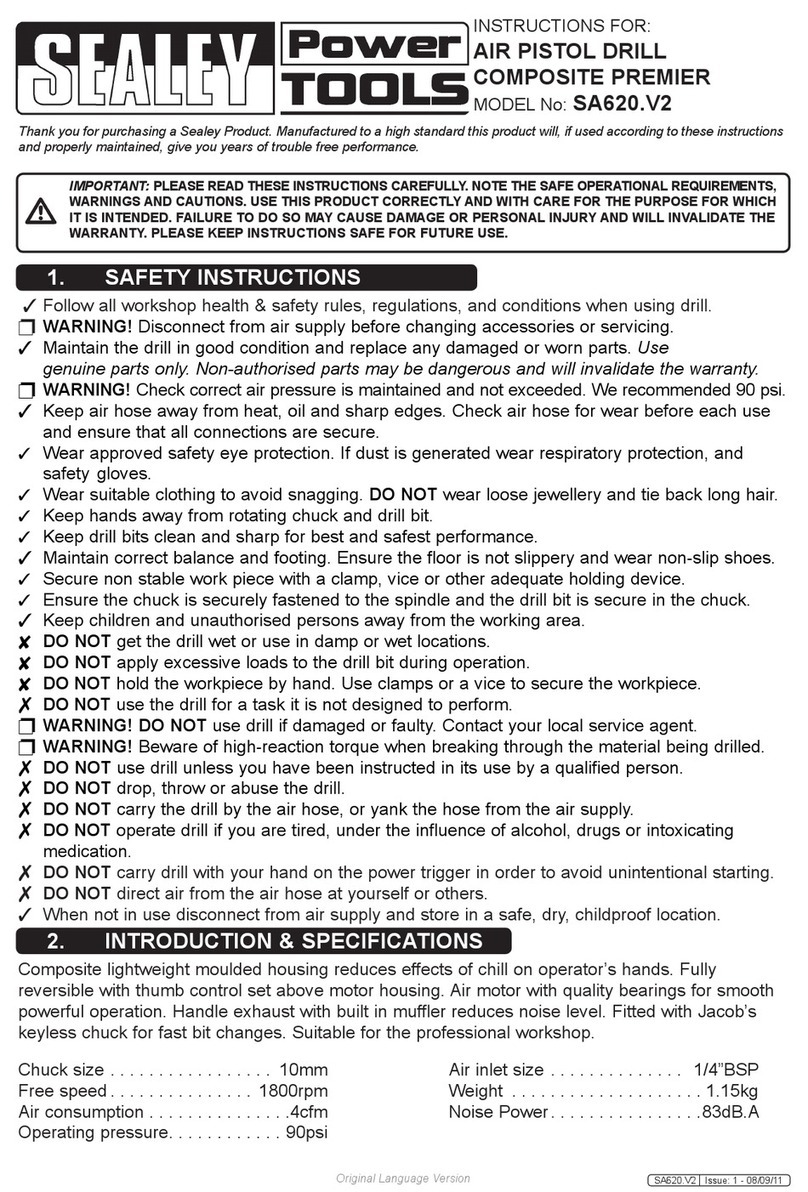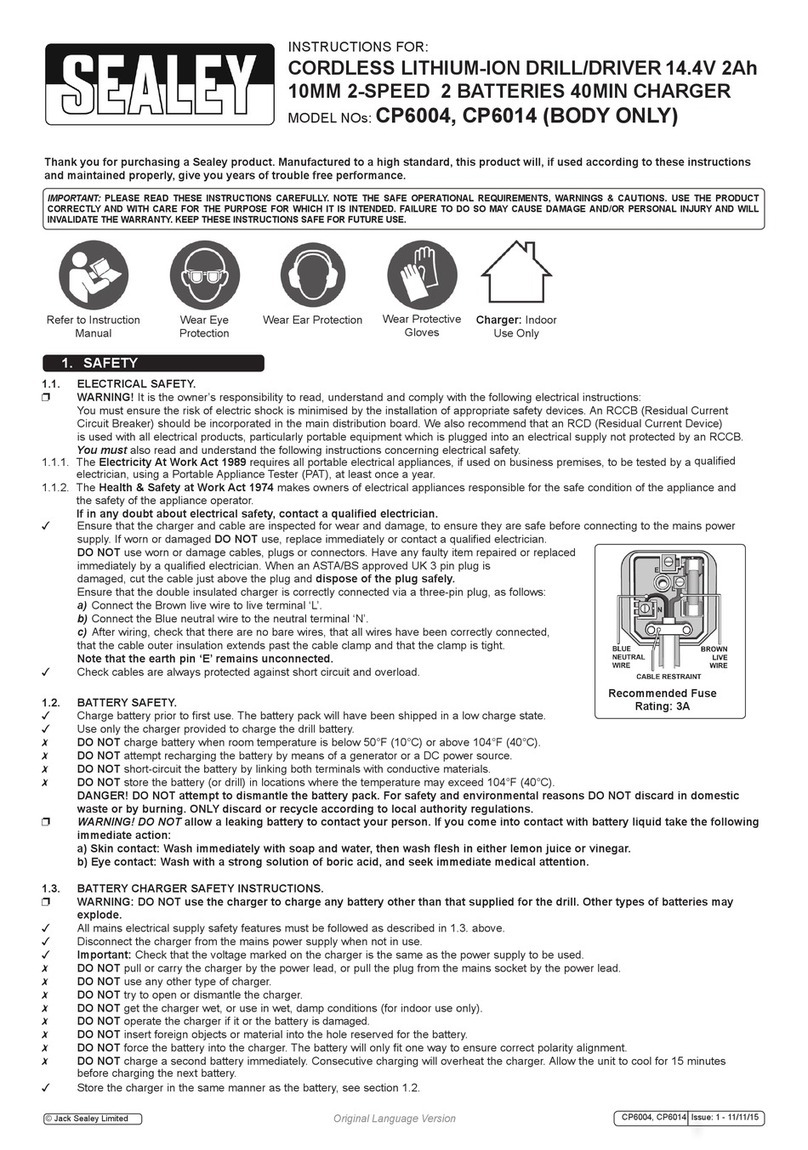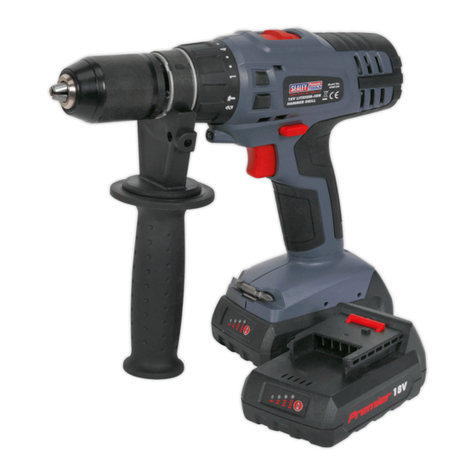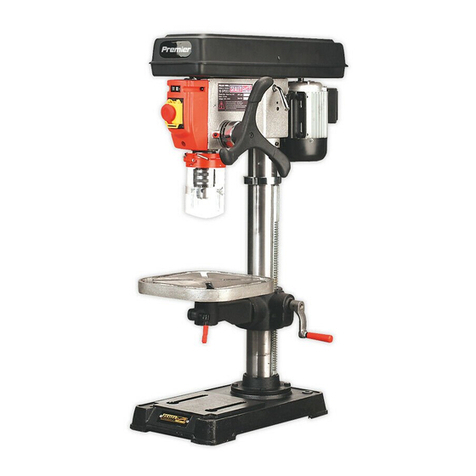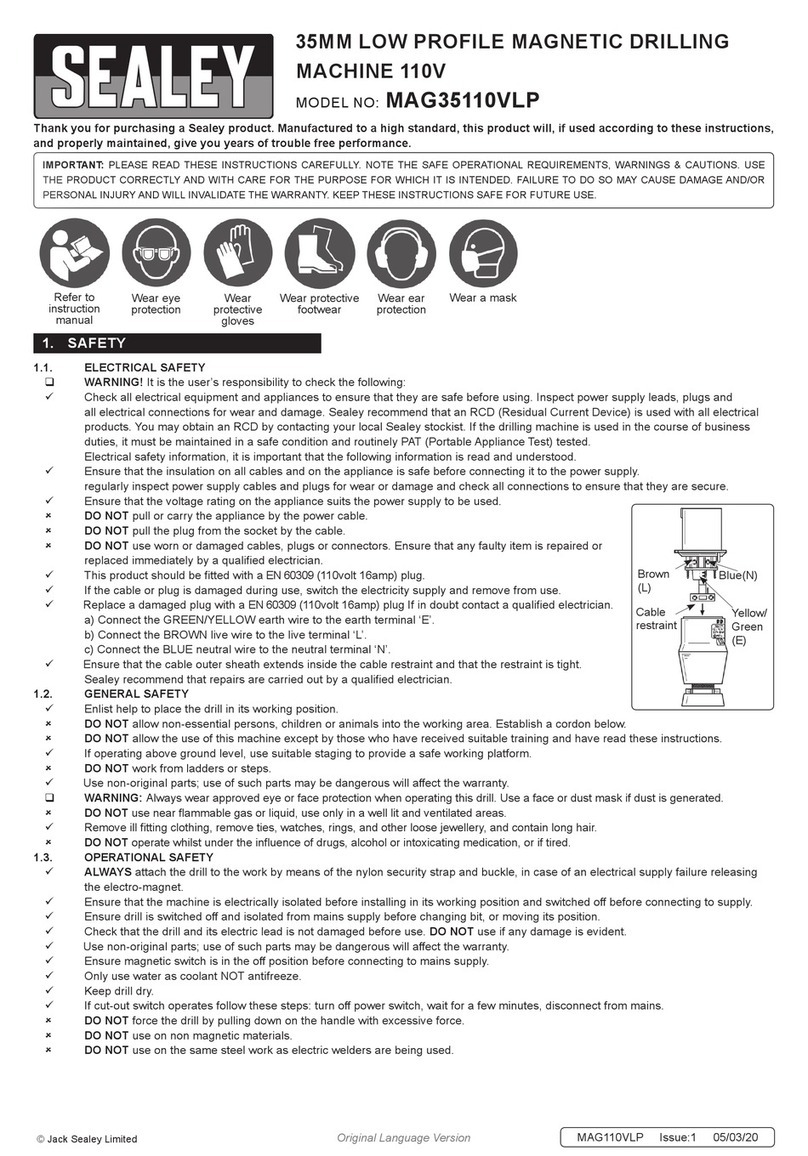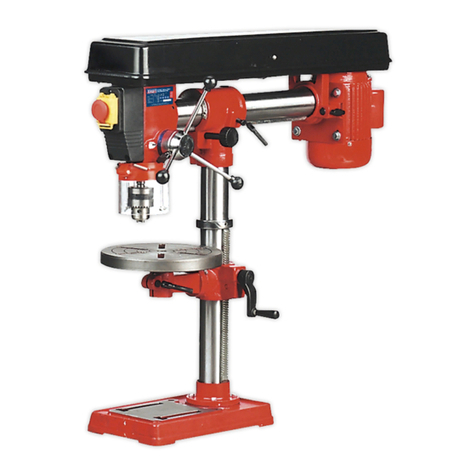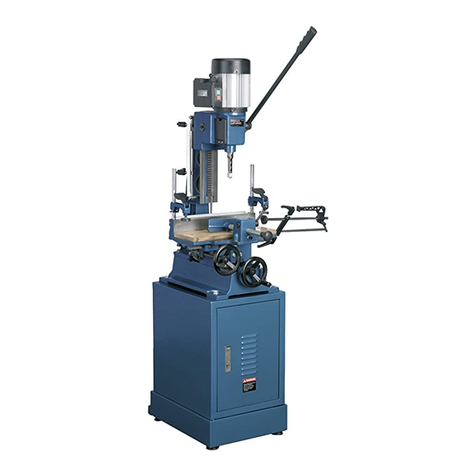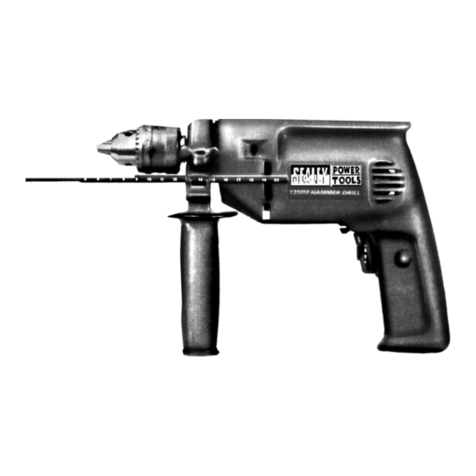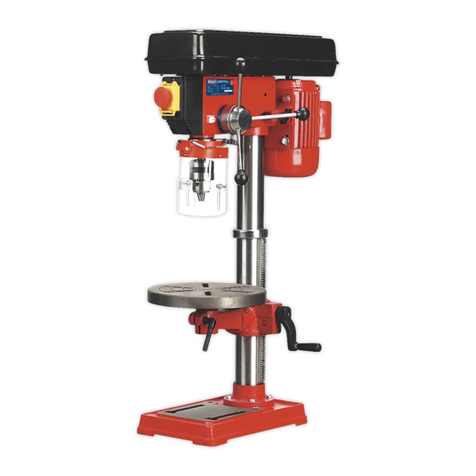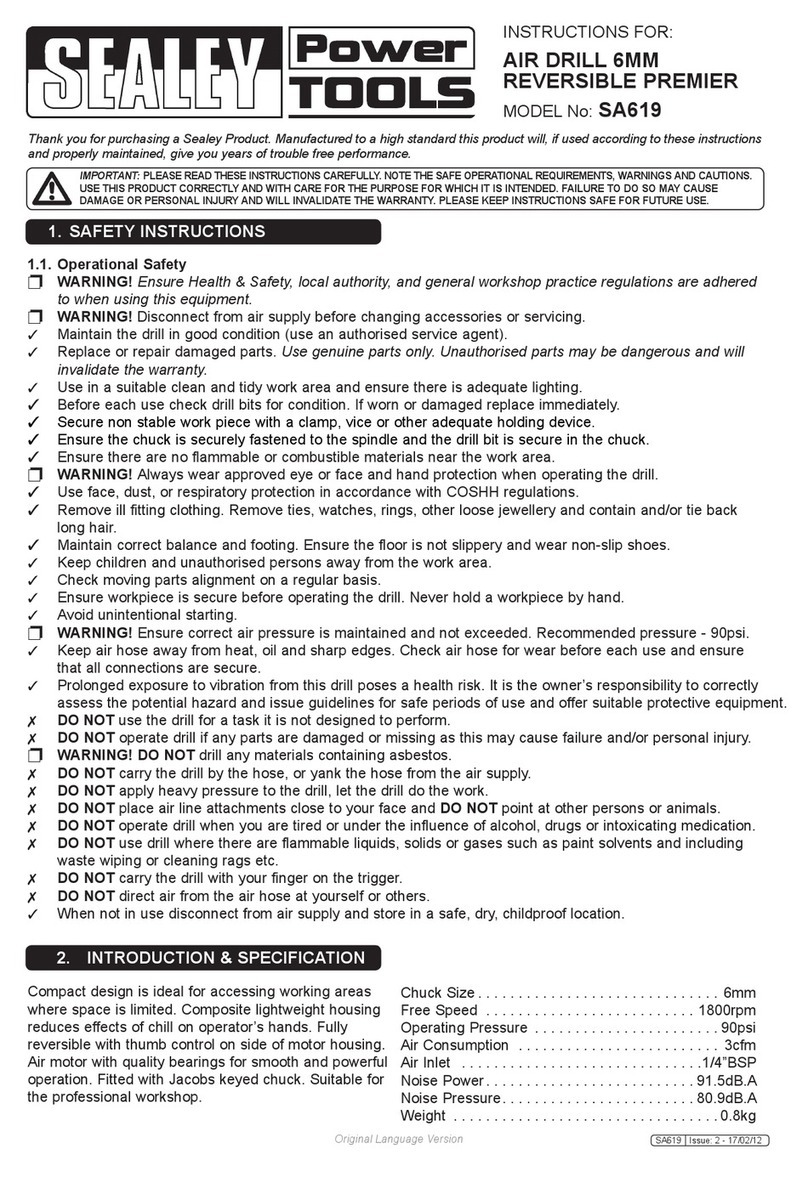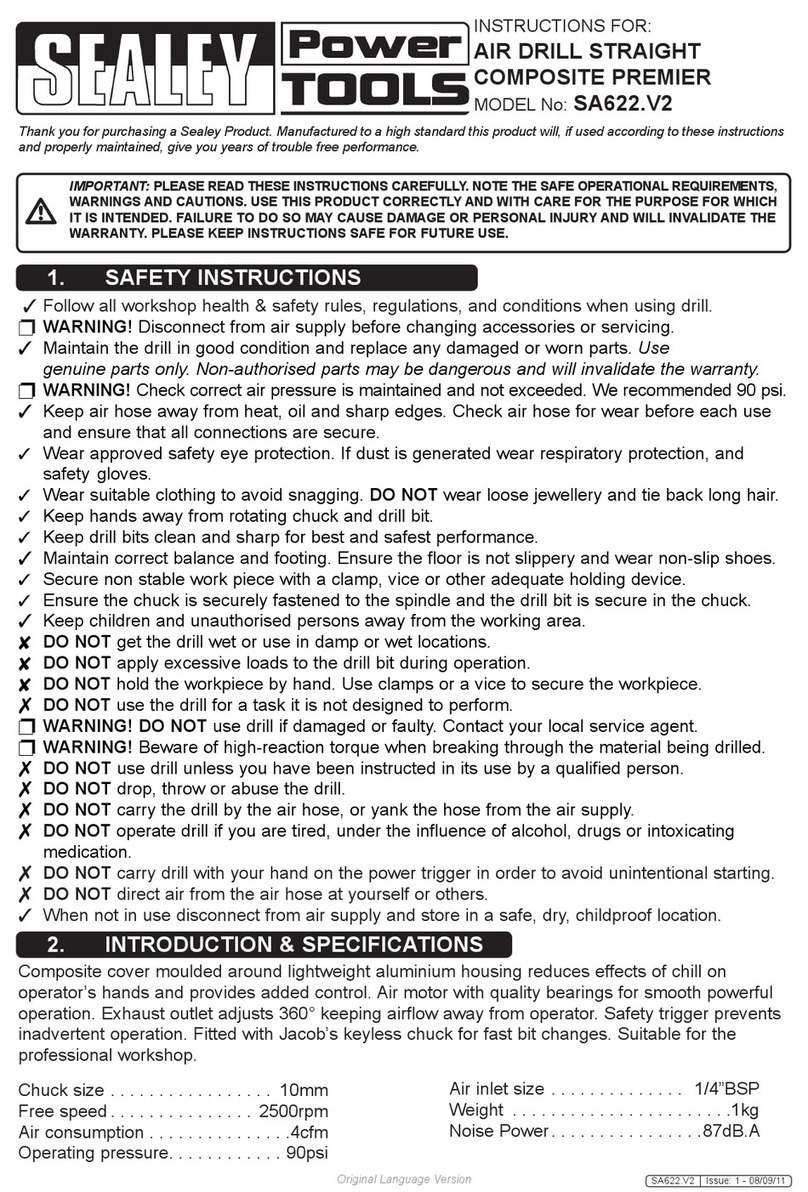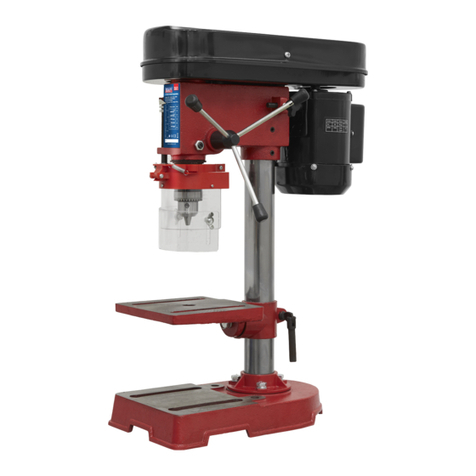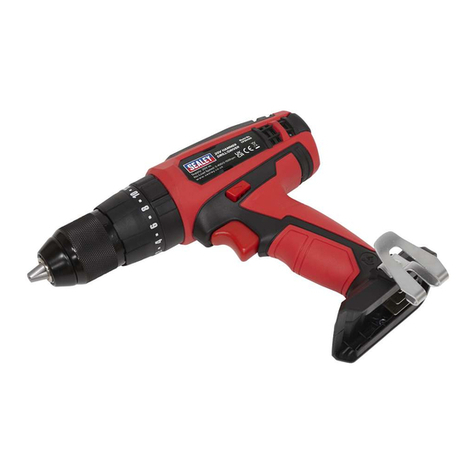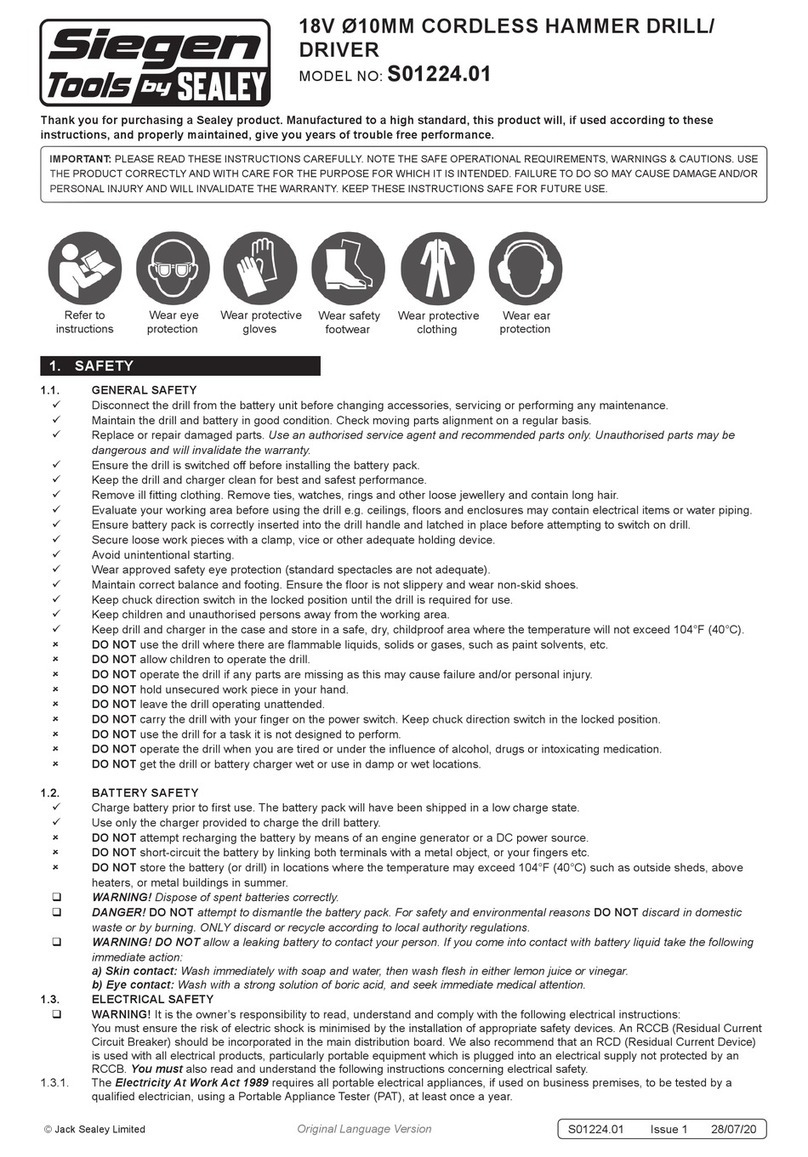
INSTRUCTIONS FOR:
12V & 18V CORDLESS HAMMER DRILLS
Models: CP9812VHK & CP9818VHK
Thank you for purchasing a Sealey product. Manufactured to a high standard this article will, if used according to these instructions
and properly maintained, give you years of trouble free performance.
1. SAFETY INSTRUCTIONS
1.2. BATTERY SAFETY INSTRUCTIONS.
pWARNING! The battery contains nickel-cadmium which is dangerous and must therefore be handled with care to avoid damage, fire,
corrosion or personal injury.
3Charge battery prior to its first use. The battery pack will have been shipped in a low charge state.
3Use the provided charger only to charge the drill battery.
7DO NOT charge battery when room temperature is below 50OF (10OC) or above 104OF (40OC).
7DO NOT attempt recharging the battery by means of an engine generator or a DC power source.
7DO NOT short-circuit the battery by touching both terminals with a metal object, or your fingers etc.
7DO NOT store the battery (and drill) in locations where the temperature may exceed 104OF (40OC ) such as outside sheds, above
heaters, or metal buildings in summer.
pWARNING! dispose of spent batteries correctly as they contain nickel-cadmium.
s
DANGER! DO NOT attempt to disassemble the battery
pack. For safety and environmental reasons DO NOT discard in domestic waste, or by burning. ONLY discard or recycle according to local
waste authority regulations.
pWARNING! DO NOT allow a leaking battery to contact your person. If you come into contact with battery liquid take the following
immediate action: p a) Skin contact: Wash immediately with soap and water, then wash flesh in either lemon juice or vinegar.
p b) Eye contact: Wash with a strong solution of boric acid, and seek immediate medical attention.
1.3. MAINS POWER ELECTRICAL SAFETY. (In relation to the battery charger)
p
p
p
WARNING! It is the users responsibility to check the following:
You must check all electrical equipment and appliances to ensure they are safe before using. You must inspect power supply leads,
plugs and all electrical connections for wear and damage. You must ensure the risk of electric shock is minimised by the installation
of appropriate safety devices. An RCCB (Residual Current Circuit Breaker) should be incorporated in the main distribution board.
We recommend that an RCD (Residual Current Device) is used with all electrical products. It is particularly important to use an RCD
together with portable products that are plugged into an electrical supply not protected by an RCCB. If in doubt consult a professional
electrician. You may obtain a Residual Current Device by contacting your dealer. You must also read and understand the following
instructions concerning electrical safety.
1.3.1. The Electricity At Work Act 1989 requires all portable electrical appliances, if used on a business premises, to be tested
by a qualified person at least once a year by using a Portable Appliance Tester (PAT).
1.3.2. The Health & Safety at Work Act 1974 makes owners of electrical appliances responsible for the safe condition of the appliance,
and the safety of the appliance operator. If in any doubt about electrical safety, contact a qualified electrician.
1.3.3. DO ensure that the insulation on all cables and the product itself is safe before connecting to the mains power supply.
See 1.3.1. above and use a Portable Appliance Tester (PAT).
1.3.4. DO ensure that cables are always protected against short circuit and overload. t
CP9812VHK & CP9818VHK - 0064 (2) - 200899
IMPORTANT: PLEASE READ THESE INSTRUCTIONS CAREFULLY. NOTE THE SAFE OPERATIONAL REQUIREMENTS, WARNINGS AND
CAUTIONS. USE THIS PRODUCT CORRECTLY AND WITH CARE FOR THE PURPOSE FOR WHICH IT IS INTENDED. FAILURE TO DO SO MAY
CAUSE DAMAGE OR PERSONAL INJURY, AND WILL INVALIDATE THE WARRANTY. PLEASE KEEP INSTRUCTIONS SAFE FOR FUTURE USE.
1.1. GENERAL SAFETY
3Disconnect the drill from the battery unit before changing accessories, servicing or performing any maintenance.
3Maintain the drill and batteries in good condition. Check moving parts alignment on a regular basis.
3Replace or repair damaged parts. Use an authorised service agent and recommended parts only. Non authorised parts may be dangerous
and will invalidate the warranty.
3Ensure the drill is switched off before installing the battery pack.
3Keep the drill and charger clean for best and safest performance.
3Remove ill fitting clothing. Remove ties, watches, rings, and other loose jewellery, and contain long hair.
3Use in adequate working area for its function. Keep area clean and tidy and free from unrelated materials and ensure
there is adequate lighting.
3Evaluate your working area before using the drill i.e. ceiling, floors and enclosures may contain electrical items or water piping.
3Ensure battery pack is correctly inserted into the drill handle and snapped in place before attempting to switch drill on.
3Secure non stable work piece with a clamp, vice or other adequate holding device. DO NOT hold work in your hand.
3Avoid unintentional starting.
3Wear approved safety eye protection (standard spectacles are not adequate).
3Maintain correct balance and footing. Ensure the floor is not slippery and wear non-slip shoes.
3Be aware that this drill does not need to be plugged into the mains power.
3Keep chuck direction switch in the locked position until the drill is required for use.
3Keep children and unauthorised persons away from the working area.
7DO NOT use the drill where there are flammable liquids, solids or gases such as paint solvents, etc.
7DO NOT allow children to operate the drill.
7DO NOT operate the drill if any parts are missing as this may cause failure or possible personal injury.
7DO NOT leave the drill operating whilst unattended.
7DO NOT carry the tool with your finger on the power switch. Keep chuck direction switch in the locked position.
7DO NOT force the drill to achieve a task it was not designed to perform.
7DO NOT operate the drill when you are tired, under the influence of alcohol, drugs or intoxicating medication.
7DO NOT get the drill or battery charger wet or use in damp or wet locations.
3Keep drill and charger in their case and store in a safe, dry, childproof area where the temperature will not exceed 104OF (40OC). t
